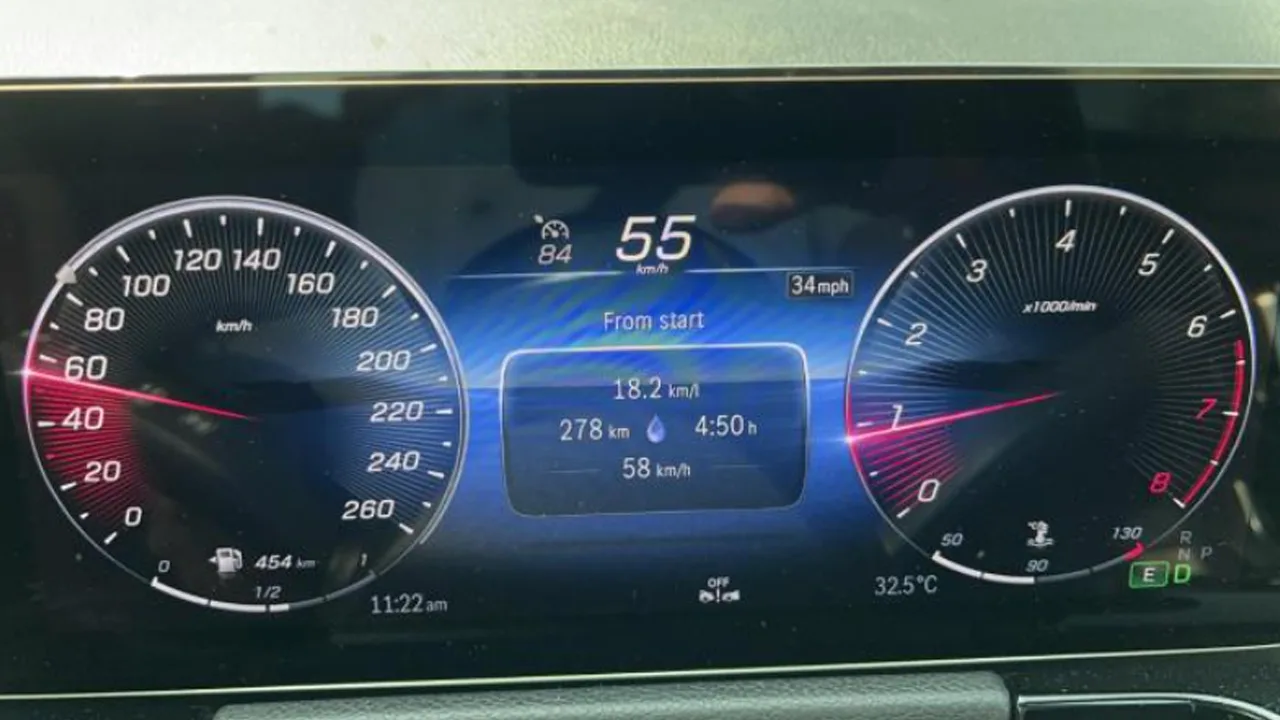Thinking of getting the Mercedes GLA 200 (Petrol)? This detailed owner’s review, based on over 4,000 kms of driving across Indian cityscapes and highways, unveils the car’s strengths and weaknesses to help you make an informed decision. Buckle up for a real-world perspective, packed with insights and practical considerations!
A Refined Ride with Luxurious Touches
The GLA 200 petrol boasts a smooth and refined engine, making every journey a pleasure. The seamless gear shifts enhance the driving experience, and paddle shifters add a touch of sportiness when you crave a more dynamic feel. Stepping inside, the beautifully crafted interiors pamper you with a luxurious ambiance. Ample storage compartments in the front, especially the spacious center armrest, keep your essentials organized. The air conditioning effectively chills the cabin, although its performance in scorching temperatures above 40 degrees remains untested.
Safety Features: A Double-Edged Sword
The GLA 200 comes equipped with a plethora of safety features, including a helpful blind-spot assist system and a 360-degree camera that provides a comprehensive view during parking maneuvers. The high-fidelity music system and intuitive multimedia interface elevate your in-car entertainment. The auto parking feature is a fun addition, though its occasional hiccups in detecting empty slots require some patience.
The suspension strikes a perfect balance, offering a comfortable ride that’s neither too soft nor too stiff, even on uneven roads. However, the ADAS auto braking system can be a bit of a concern. The car’s tendency to brake unexpectedly due to false detections necessitates disabling this feature at times, especially in unpredictable city traffic.
Comfort Concerns and Quirky Features
While the front seats provide good support, their comfort diminishes on long journeys. My wife and I experienced some fatigue after extended driving sessions. The navigation system falls short compared to the user-friendliness of Google Maps, and the seat kinetics feature feels more like a gimmick than a true comfort enhancer.
Another peculiarity is the rear camera’s operation. It pops out frequently, even with minor slowdowns or approaching vehicles, creating an unnecessary noise. A fixed camera would have been a simpler and less distracting solution. The air conditioning system also has a mind of its own, automatically switching to outside air intake periodically. This necessitates manually switching back to internal circulation to avoid unpleasant odors.
Fuel Efficiency: A Mixed Bag
As for mileage, my driving style is sedate, focusing on smooth acceleration and keeping the air conditioning on constantly. This translates to:
- Mumbai Rush Hour Traffic: 4 kmpl (Brace yourself for the pump!)
- Mumbai Non-Rush Hour Traffic (Avg. Speed 40 kmph): 10 kmpl
- Mumbai-Delhi Expressway (NE 4) – Constant Speed 120 kmph, RPM 2000: 16.5 kmpl (A sweet spot for highway cruising)
- National Highways (Avg. Speed 60 kmph): 18 kmpl
- Mumbai-Delhi Expressway (NE 4) – Constant Speed 90 kmph, RPM 1400: 20 kmpl (Fuel efficiency shines at moderate speeds)
Mumbai-Delhi Expressway: A Work in Progress
My journey on the Mumbai-Delhi Expressway (NE 4) revealed some interesting insights:
- The Expressway’s Status: The expressway is partially operational, starting near Gurgaon and ending in Bharuch, Gujarat. Beyond Bharuch, you’ll need to navigate state and national highways until reaching the MP-Gujarat border. The Gujarat state highway is a pothole-ridden nightmare, but thankfully, it leads to a national highway that takes you to Vadodara. From there, you can rejoin NE 4 and continue to Bharuch.
- Limited Amenities: Food options are scarce along the expressway, with most food courts still under construction. Operational gas stations are also hard to come by, so ensure a full tank before embarking on your journey. Electric vehicle charging stations are even rarer sightings (only one spotted between Sohna and Dausa).
- Road Conditions: The expressway boasts a smooth surface, but it’s not perfectly level. Expect gradual climbs and descents throughout the journey. Traffic is sparse, but beware of reckless drivers who stop in the fast lane or pedestrians crossing the road (yes, you read that right!).
- Alternative Routes: On my trip to Delhi, I opted for the Nashik-Indore highway, offering a better driving experience compared to the state highways




